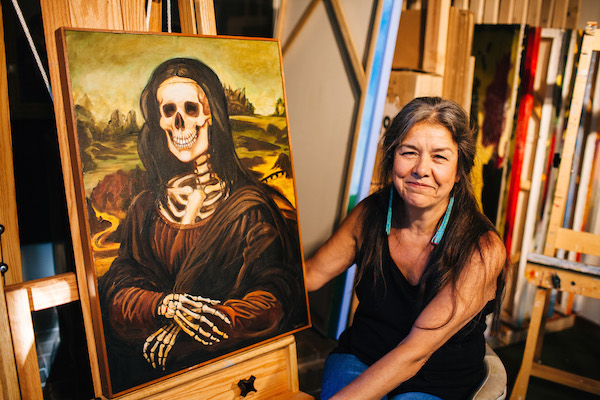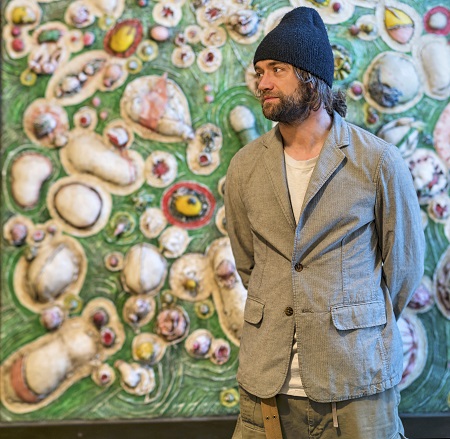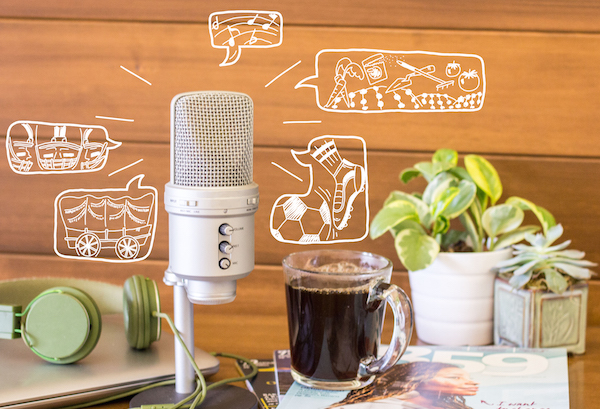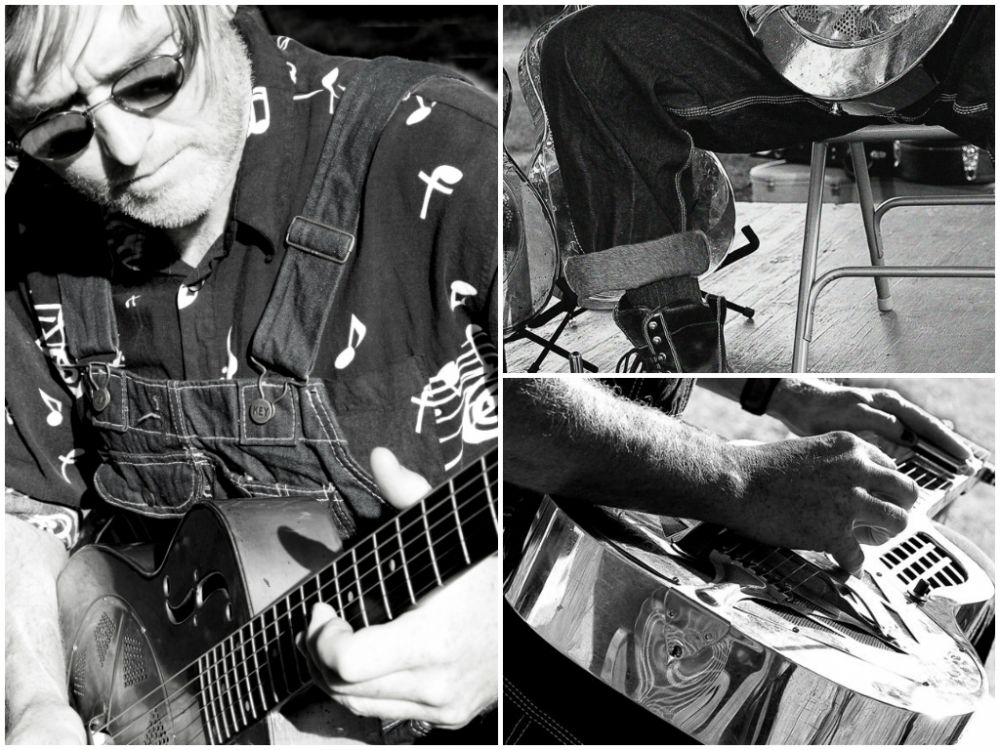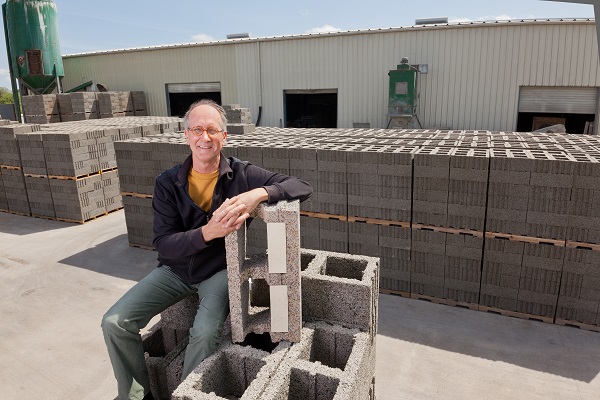written by Anna Bird | photos by Eugene Pavlov
A tall charcoal drawing hangs prominently in the dining room of Analee Fuentes’ Coburg home. The woman in it looks stoicly toward the dining table that is covered with a green Mexican textile. “That’s a real old drawing of my grandmother,” Fuentes said. She has a slow and gentle way of speaking, and a confident but kind demeanor. Her grandmother, Victoria Fuentes de Franco, fled Mexico during the Mexican revolution. Fuentes said Victoria and her husband waded across the Rio Grande in the middle of the night with Texas Rangers shooting at them. “She’s my inspiration in the studio, she and my mother both,” said Fuentes, an artist and teacher. “I can sense them in there.”
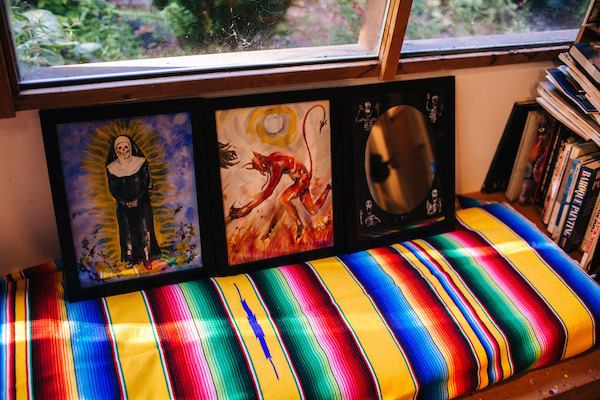
Victoria and her husband ended up in Southern California after crossing the border. Many years later, she helped her daughter raise Fuentes in Barrio Logan, a black and Latino neighborhood in San Diego. Fuentes remembers her grandmother’s cooking. “On Sundays, we would go over, and she would spread the table out with orange rice and beans and salads, and it was this beautifully orchestrated meal,” she said. “That was her craft.”
Her mom and grandmother didn’t have a lot of money, but they had the foresight to take Fuentes to the San Diego Art Museum at a young age. “They were just poor folks living in the barrio, but they understood the power and the value of seeing art,” said Fuentes. Something stuck.
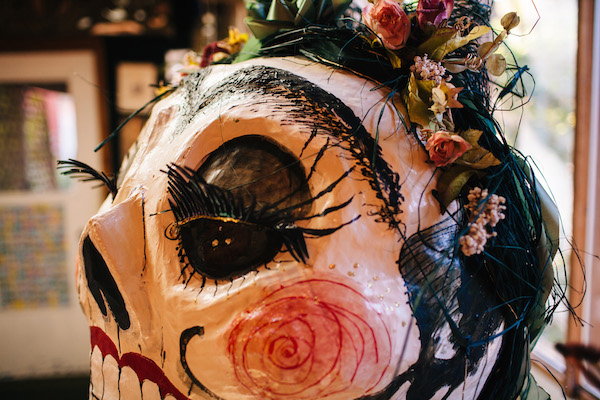
Even though the matriarch supported Fuentes’ creative interests, Fuentes thought she needed a more practical career, so she went into nursing. After earning her credentials and working as a nurse for about a decade, Fuentes realized it wasn’t for her. She knew that it would never sustain her in the profound way art could. Fuentes enrolled in the University of Oregon for an undergraduate degree and then pursued a master’s of fine art from the University of Arizona. In 1998, she became a faculty teacher at Linn-Benton Community College in Albany, where she is a 2-D Studio Foundations instructor.
This year, with the help of her colleague Dana Emmerson, she raised more than $15,000 for the Fuentes-Emmerson Scholarship for Oregon Latinos. A similar scholarship allowed her to pay for her undergraduate education while raising a daughter. “I feel like I’ve really done something for future students there,” she said.
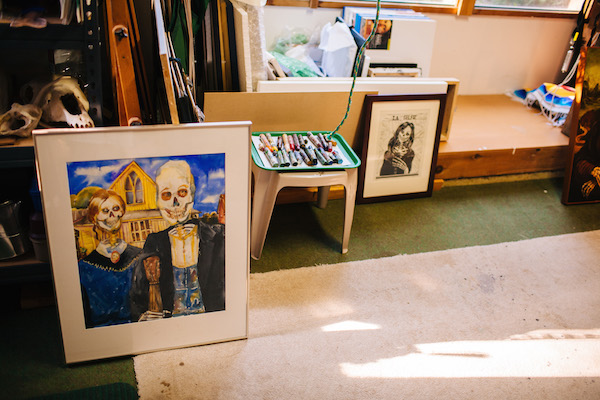
When she’s not reviewing portfolios or grading tests, she spends as much time in her studio as she can—painting and experimenting with different media, challenging herself to learn new techniques and explore new ideas. An ongoing series is made up of enlarged portraits of colorful fish she catches fly-fishing in the Cascades—brook trout, brown trout, rainbow trout and salmon. Fuentes is drawn to the vibrant colors of the Southwest, but one day realized Oregon fish could be her new palate.
Around this time every year, she also paints a small collection of Dia de los Muertos— Day of the Dead—pieces. The Mexican holiday is a celebration for the dead. People pay tribute to loved ones who have passed away, remember their lives and make ofrendas— altars—with the dead’s favorite things. Starting October 31, friends and family pay homage to their deceased in different ways, depending on where they’re from. Fuentes said the dead love the smell of marigolds, so some people will leave a trail of marigolds from the graves to their homes.
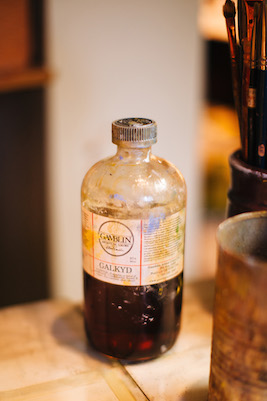
When Fuentes came to Oregon thirty years ago, few Latino-Americans lived here. When she would talk about Dia de los Muertos, people often thought it was morbid and strange. “The idea behind Day of the Dead is that you kind of poke fun at yourself because we’re all mortal, we’re all going to die, so it’s kind of a way to be silly about it,” she said.
Fuentes incorporates the bright colors of her past with the celebration and humor of the holiday and subject matter from popular media or current events. Her favorite is a painting of a skeleton Kim Kardashian taking a selfie, “La Selfie.” She uses a skeleton you might see in a biology classroom for reference, and every once in a while she dresses him up for fun.
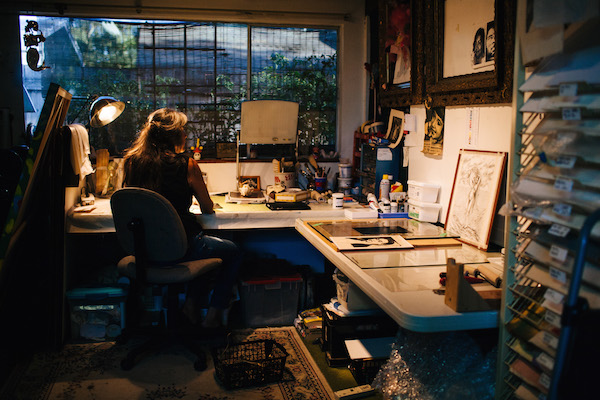
On the door to Fuentes’ studio is a sign that says “Mi Casa No Es Su Casa.” Inside, she has a permanent ofrenda. Her mother’s ashes are stored in a ceramic bowl next to her old water paints and various mementos and pictures from her family. “I like company in the studio, and they’re good company,” Fuentes said. “I really lean in to have some guidance and some humor and some advice on my paintings from my family,” she said. “Ah, they were funny.”


